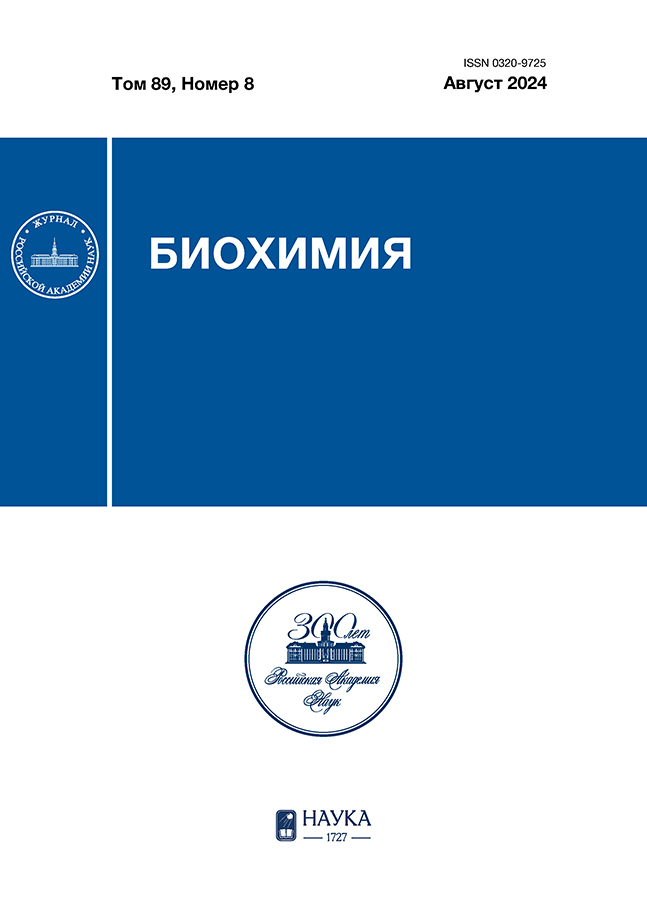Functional Analysis of the Channel Rhodopsin Genes from the Green Algae of the White Sea Basin
- 作者: Karpova O.V.1, Vinogradova E.N.1,2, Moisenovich A.M.1, Pustovit O.B.1, Ramonova А.А.1, Abramochkin D.V.1, Lobakova E.S.1
-
隶属关系:
- Lomonosov Moscow State University
- National Research Center “Kurtchatov Institute”
- 期: 卷 89, 编号 8 (2024)
- 页面: 1322-1333
- 栏目: Articles
- URL: https://kazanmedjournal.ru/0320-9725/article/view/665686
- DOI: https://doi.org/10.31857/S0320972524080023
- EDN: https://elibrary.ru/KEECUH
- ID: 665686
如何引用文章
详细
Optogenetics as the method of light-controlled regulation of cellular processes is based on the use of the channel rhodopsins that directly generate photoinduced currents. The largest number of channel rhodopsin genes has been identified in the green microalgae Chlorophyta, and the demand for increasing the number of functionally characterized channel rhodopsins and the diversity of their photochemical parameters keeps growing. We performed the expression analysis of cation channel rhodopsin (CCR) genes in natural isolates of microalgae of the genera Haematococcus and Bracteacoccus from the unique Polar Circle region. The identified full-length CCR transcript of H. lacustris is the product of alternative splicing and encodes the Hl98CCR2 protein with no photochemical activity. The 5′-partial fragment of the B. aggregatus CCR transcript encodes the Ba34CCR protein containing a conserved TM1–TM7 membrane domain and a short cytosolic fragment. Upon heterologous expression of the TM1–TM7 fragment in CHO-K1 cell culture, light-dependent current generation was observed, and its parameters correspond to the characteristics of the CCR. The first discovered functional channel rhodopsin of Bracteacoccus has no close CCR homologs and may be of interest as a candidate for optogenetics.
作者简介
O. Karpova
Lomonosov Moscow State University
编辑信件的主要联系方式.
Email: olgakarpova@ymail.com
Biology Department
俄罗斯联邦, 119991 MoscowE. Vinogradova
Lomonosov Moscow State University; National Research Center “Kurtchatov Institute”
Email: olgakarpova@ymail.com
Biology Department; Genome Center
俄罗斯联邦, 119991 Moscow; 123182 MoscowA. Moisenovich
Lomonosov Moscow State University
Email: olgakarpova@ymail.com
Biology Department
俄罗斯联邦, 119991 MoscowO. Pustovit
Lomonosov Moscow State University
Email: olgakarpova@ymail.com
Biology Department
俄罗斯联邦, 119991 MoscowА. Ramonova
Lomonosov Moscow State University
Email: olgakarpova@ymail.com
Biology Department
俄罗斯联邦, 119991 MoscowD. Abramochkin
Lomonosov Moscow State University
Email: olgakarpova@ymail.com
Biology Department
俄罗斯联邦, 119991 MoscowE. Lobakova
Lomonosov Moscow State University
Email: olgakarpova@ymail.com
Biology Department
俄罗斯联邦, 119991 Moscow参考
- Govorunova, E. G., Sineshchekov, O. A., and Spudich, J. L. (2022) Emerging diversity of channelrhodopsins and their structure-function relationships, Front. Cell. Neurosci., 15, 800313, https://doi.org/10.3389/fncel.2021.800313.
- Sineshchekov, O. A., Govorunova, E. G., Der, A., Keszthelyi, L., and Nultsch, W. (1992) Photoelectric responses in phototactic flagellated algae measured in cell suspension, J. Photochem. Photobiol. B Biol., 13, 119-134, https://doi.org/10.1016/1011-1344(92)85051-U.
- Sineshchekov, O. A., Jung, K.-H., and Spudich, J. L. (2002) Two rhodopsins mediate phototaxis to low- and high-intensity light in Chlamydomonas reinhardtii, Proc. Natl. Acad. Sci. USA, 99, 8689-8694, https://doi.org/10.1073/pnas.122243399.
- Govorunova, E. G., Jung, K.-W., Sineshchekov, O. A., and Spudich, J. L. (2004) Chlamydomonas sensory rhodopsins A and B: cellular content and role in photophobic responses, Biophys. J., 86, 2342-2349, https://doi.org/10.1016/S0006-3495(04)74291-5.
- Deisseroth, K. (2015) Optogenetics: 10 years of microbial opsins in neuroscience, Nat. Neurosci., 18, 1213-1225, https://doi.org/10038/nn.4091.
- Govorunova, E. G., Sineshchekov, O. A., Li, H., Wang, Y., Brown, L. S, Palmateer, A., Melkonian, M., Cheng, S., Carpenter, E., Patterson, J., Wong, G. K., and Spudich, J. L. (2021) Cation and anion channelrhodopsins: sequence motifs and taxonomic distribution, mBio, 12, e0165621, https://doi.org/10128/mBio.01656-21.
- Карпова О. В., Виноградова E. Н., Лобакова Е. С. (2022) Идентификация генов канальных родопсинов в зеленых и криптофитовых водорослях Белого и Черного морей, Биохимия, 87, 1492-1504, https://doi.org/10.31857/S0320972522100141.
- Galietta, L. J., Haggie, P. M., and Verkman, A. S. (2001) Green fluorescent protein-based halide indicators with improved chloride and iodide affinities, FEBS Lett., 499, 220-224, https://doi.org/10.1016/s00145793(01)02561-3.
- Hou, S. Y., Govorunova, E. G., Ntefidou, M., Lane, C. E., Spudich, E. N., Sineshchekov, O. A., Spudich, J. L. (2012) Diversity of Chlamydomonas channelrhodopsins, Photochem. Photobiol., 88, 119-128, https://doi.org/10.1111/j.1751-1097.2011.01027.x.
- Klapoetke, N. C., Murata, Y., Kim, S. S., Pulver, S. R., Birdsey-Benson, A., Cho, Y. K., Morimoto, T. K., Chuong, A. S., Carpenter, E. J., Tian, Z., Wang, J., Xie, Y., Yan, Z., Zhang, Y., Chow, B. Y., Surek, B., Melkonian, M., Jayaraman, V., Constantine-Paton, M., Wong, G. K., and Boyden, E. S. (2014) Independent optical excitation of distinct neural populations, Nat. Methods, 11, 338-346, https://doi.org/10.1038/nmeth.2836.
- Rozenberg, A., Oppermann, J., Wietek, J., Fernandez Lahore, R. G., Sandaa, R. A., Bratbak, G., Hegemann, P., and Béjà, O. (2020) Lateral gene transfer of anion-conducting channelrhodopsins between green algae and giant viruses, Curr. Biol., 30, 4910-4920, https://doi.org/10.1016/j.cub.2020.09.056.
- Nagel, G., Ollig, D., Fuhrmann, M., Kateriya, S., Musti, A. M., Bamberg, E., and Hegemann, P. (2002) Channelrhodopsin-1: a light-gated proton channel in green algae, Science, 296, 2395-2398, https://doi.org/10.1126/science.1072068.
- Nagel, G., Szellas, T., Huhn, W., Kateriya, S., Adeishvili, N., Berthold, P., Ollig, D., Hegemann, P., and Bamberg E. (2003) Channelrhodopsin-2, a directly light-gated cation-selective membrane channel, Proc. Natl. Acad. Sci. USA, 100, 13940-13945, https://doi.org/10073/pnas1936192100.
- Говорунова Е. Г., Синещеков О. А. (2023) Канальные родопсины: от фототаксиса к оптогенетике, Биохимия, 88, 1880-1897, https://doi.org/10.1134/S000629792310015.
- Hososhima, S., Ueno, S., Okado, S., Inoue, K., and Konno, M. (2023) A light-gated cation channel with high reactivity to weak light, Sci. Rep., 13, 7625, https://doi.org/10.1038/s41598-023-34687-7
补充文件









